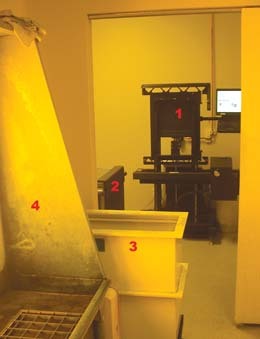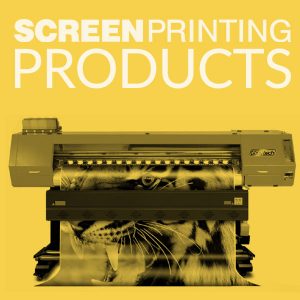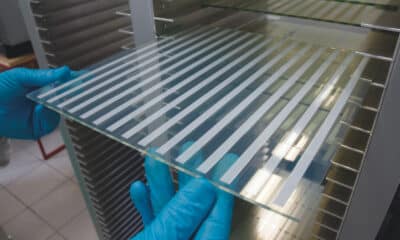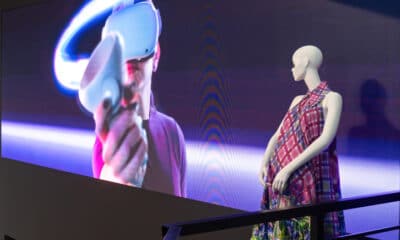Articles
Published
8 years agoon

When HP worked with Coca-Cola to print different names and messages on millions of cans and bottles of Diet Coke, it was a brilliant demonstration of how far digital printing technology has come. The remarkable ability to custom decorate a mass-market product captured the attention of consumers, brands, marketing agencies, and manufacturers.
When HP worked with Coca-Cola to print different names and messages on millions of cans and bottles of Diet Coke, it was a brilliant demonstration of how far digital printing technology has come. The remarkable ability to custom decorate a mass-market product captured the attention of consumers, brands, marketing agencies, and manufacturers.
This heightened awareness of mass customization is likely to accelerate the adoption of all types of high-speed digital printers. In addition to enabling the customization of many different types of products, high-speed inkjet printing can help innovators create new types of products, enable product manufacturers to reduce inventory and shipping costs, and bring more manufacturing back to the US.
The trend will accelerate due in part to the continuing refinement of single-pass inkjet technology. Eagerly anticipated in many of the markets served by screen printers, single-pass technology is already used in many print sectors. The first single-pass inkjet systems used aqueous inks to print on paper, photo stock, labels, and paperboard packaging. The next wave of single-pass systems used textile inks for high-speed fabric printing, or UV-curable or specialty inks for ceramics, decorative laminates, glass, and manufactured parts.
Developments at drupa 2016 made it clear that a third wave of single-pass inkjet printing systems is on the way. Single-pass inkjet printers will be used to print a wider range of papers, packaging materials, bottles, three-dimensional objects, wallcoverings, and decorative laminates for walls, floors, and furnishings. The long-range implications of this technology are enormous, both inside and outside applications that have traditionally been served by the readers of Screen Printing.
It’s Not Just About Throughput Speed
Before looking at some of the innovations shown at drupa, it’s worth understanding how single-pass inkjet printing has evolved to this point. If you are accustomed to working with large-format inkjet printers with traversing printhead carriages, a single-pass inkjet system seems incredibly fast. It’s stunning to see a full-color poster roll off a unit like an Océ ColorWave 900 or HP PageWide XL 8000 in seconds. Single-pass systems use a fixed array of inkjet heads to print the full width of the media at once, which is clearly more efficient than waiting for printheads to travel back and forth across the image area in swaths.
Although single-pass inkjet printing may be a novelty for wide-format print shops, it’s not the speed of these devices that impresses companies that already use high-speed commercial offset and flexographic printing equipment. They are sold on the fact that well-automated single-pass inkjet systems can alter the text and images on millions of printed pieces. Fast, single-pass inkjet systems also enable print providers to accept shorter run jobs and turn them around quickly – both necessities. How quickly a job can go from concept to finished product is very important today to manufacturers and marketers that want to stay relevant.
Single-Pass Inkjet Isn’t New
For years, a growing variety of production inkjet presses have been printing books, manuals, catalogs, financial statements, newspapers, advertising inserts, direct mail pieces, labels, folding cartons, and corrugated boxes. Since 2009, HP PageWide Web Presses have produced more than 150 billion letter-sized equivalent pages.
“The holy grail for digital inkjet print has always been to economically deliver extremely fast printing with quality that at least matches traditional print methods,” says Gillian Ewers, director of marketing for printhead developer Xaar.
Single-pass inkjet printing is already used on many types and sizes of printers because “Fixed printheads that remain rigid over the substrate can be flexibly assembled to create various widths and system speeds,” explains Bill Brunone, general manager of commercial printing at Memjet. His company’s printheads and paten-ted single-pass Waterfall Printhead Technology are used in a variety of roll-to-roll, sheet-fed, and label presses made by companies such as Afinia, Astro Machine, Colordyne Technologies, Delphax, Digikett, SuperWeb Digital, and Trojanlabel.
HP developed its first PageWide printhead in 1991. But the technologies needed to make PageWide work in a reliable, cost-effective manner had yet to be invented, so their team of engineers and chemists worked to make it happen. They used a fixed array of thermal inkjet printheads on the HP Color Inkjet Web Presses introduced in 2006 and a full-page 8.57-inch inkjet printhead for the HP OfficeJet Pro X-series printers in 2013. Over the years, HP has developed 20-, 30-, and 42-inch configurations of PageWide color and monochrome presses for different applications and media types. One of HP’s newest PageWide web presses (the T240) has a monthly duty cycle of 60 million letter-sized-equivalent pages.
Other companies that make production inkjet presses include Fujifilm (Jet Press), Canon (Océ ImageStream and Océ VarioPrint), Screen (TruePress Jet), Xerox (Brenva and Trivor), Ricoh (Pro), and Kodak (Prosper). Most of these production units use drop-on-demand inkjet technology, although Kodak’s Prosper 6000S printers use continuous inkjet technology to print four-color pages at speeds of up to 1000 feet per minute. Kodak reports that the Prosper’s nano-particulate pigment ink supports low running costs, wide color gamuts, and the ability to print on uncoated and coated papers and a range of packaging materials.
As technical challenges associated with the earliest systems have been resolved, production inkjet systems are moving into the mainstream of commercial printing. In the brave new world of omnichannel marketing and data analytics, many publishers and marketers want to print shorter runs of more targeted materials.
“Inkjet solutions can now deliver a higher level of quality at remarkably faster speeds than had previously been possible,” says Brunone. “At a native 1600 dpi per color, inkjet is approaching resolutions that compare to offset and screen printing.”
Single-Pass Inkjet in Other Markets
Single-pass inkjet systems that use aqueous inks are also printing photos, technical drawings, posters, labels, packaging, and textiles. Here are just a few examples:
Photos: The Canon DreamLabo 5000 for retail photo labs uses a fixed array of seven FINE thermal inkjet printheads to output seven colors of aqueous dye inks on luster, glossy, satin, silky, and metallic inkjet photo papers. The continuous-feed unit can print a 20-page A4-size photo album in 72 seconds and 50 albums per hour.
Technical Drawings, Maps, and Posters: The first single-pass wide-format color inkjet printers were 42-inch models driven by Memjet printheads. They were designed to print on inexpensive bond papers or coated inkjet papers (matte or glossy) and close the speed and media-cost gap between wide-format inkjet printing and offset printing. These units include Canon’s Océ ColorWave 900 (right); the RTI Vortex 4200 by Reprographic Technology; and the Xerox Wide Format IJP 2000. The Xerox brochure points out that wide-format jobs that once took five hours on multi-pass inkjet printers can now be completed in just five minutes; a single poster can be printed in under five seconds.
2000. The Xerox brochure points out that wide-format jobs that once took five hours on multi-pass inkjet printers can now be completed in just five minutes; a single poster can be printed in under five seconds.
In 2015, HP introduced the HP PageWide XL family of single-pass wide-format inkjet printers for maps and technical drawings. These units were promoted as a way for reprographic firms to offer faster turnaround on large sets of drawings that involved both color and monochrome prints. (PageWide printers can also replace many of the outdated aqueous-ink DesignJets in the field that, in turn, had replaced pen plotters for technical printing.)
Short-Run and Customized Packaging: The Memjet-powered Xanté Excelagraphix 4200 wide-format printer can image folding carton stock or corrugated cardboard. It is being used to print customized pizza-delivery boxes and branded packaging for small, e-commerce startups that may only need about 100 packages a year. For example, All Sports Manufacturing of Pensacola, Florida, uses the Excelagraphix 4200 to eliminate the need to print and manually apply labels. All required information is printed directly on the boxes, including product pictures, SKU information, brand requirements, and barcodes.
Textiles: Single-pass inkjet systems that use water-based inks have also been developed for production-speed textile printing. Digital production uses less water and energy than rotary screen printing, so textile manufacturers have an economic incentive to make the switch. Higher-speed digital textile printing will also enable fashion brands and designers of interior décor fabrics to fulfill orders for short runs and get new products to market quickly, whether it’s through e-commerce platforms, design centers, or retail stores. Fabrics can also be printed closer to the point of sale.
Four single-pass textile inkjet systems are currently available: the LaRio by MS Printing Solutions, the Nassenger SP-1 by Konica Minolta, the Honghua Vega-1 by  Atexco, and the Pike by SPGPrints (left).
Atexco, and the Pike by SPGPrints (left).
Bottles and Containers: Direct imaging to bottles and containers circumvents the time and expense of printing and applying labels. Plus, the packages can be used as a communications medium in conjunction with event marketing or for product customization and personalization. Direct-to-shape printers designed for bottles and con-
tainers have already attracted the attention of companies such as Coca-Cola, Procter & Gamble, Walmart, Pepsi, Unilever, and Heineken.
KBA-Kammann and other leading producers of conventional high-speed equipment for container printing have brought digital systems to market in recent years. Companies working with Xaar on direct-to-shape printers include Krones, Plastipak Packaging, KHS, Till, Sacmi, and Inx Digital.
Industrial Inkjet Printing Will Support a New Era in Manufacturing
The next big frontier for single-pass inkjet is industrial printing, including some applications currently handled by screen and pad printing. The mass manufacturing model based primarily on efficiency is moving toward a fast fulfillment model in which production is based on specific needs. Today, consumers around the world want high-quality products made in an environmentally responsible, waste-free manner by workers who are paid fair wages. It is becoming less desirable to have massive quantities of lookalike goods manufactured in China and shipped to warehouses for storage and delivery. Many consumers want products that are made closer to home and reflect differences in personal styles and tastes.
As the markets for large-format signs and graphics show signs of maturing, inkjet developers have focused on solving problems related to industrial inkjet printing, particularly for packaging and direct-to-shape printing. The diversity and complexity of the printing surfaces and materials require the development of specialized systems and inks that must withstand the extreme conditions to which printed parts will be exposed during manufacturing, shipping, and use – a particular challenge, developers say, for UV technology.
Another challenge lies in the fact that many industrial inkjet printing devices must be integrated with the manufacturer’s existing production and finishing equipment. To facilitate this process, inkjet system integrators pull together the right printheads, inks, curing units, drive electronics, and ink-supply systems for the intended application. Printhead manufacturers are supporting the systems integrators by developing “printbars” that combine the desired number of printheads with the supporting electronics and ink-supply systems. Once the components have been assembled to deliver reliable jetting and ink performance, the manufacturer’s engineering team can figure out how to incorporate the inkjet components into their own production and finishing lines.
Companies that offer system integration services for industrial inkjet systems include Agfa Graphics, Durst Industrial Inkjet Application, mprint, Thieme, Industrial Inkjet Ltd, KBA-Kammann, Cyan Tec, Hymmen, and Engineered Printing Solutions (formerly Pad Print Machinery of Vermont). These companies help manufacturers engineer transport systems, dryers, feeders, finishers, and coaters as needed.
“Many companies want to work with a single vendor for their production needs,” explains Scott Einsig, director of business development for Engineered Printing Solutions, a company that identified the need for high-throughput inkjet printers for industrial markets 10 years ago. “All of our single-pass offerings are purpose-built for a specific application.” After working with ink manufacturers and printhead suppliers to develop the right print engine, integrators like Engineered Printing Solutions use their automation experience to create a comprehensive platform. Sometimes these involve adding modular components for parts handling or vision systems for quality control and final packaging of the printed product.
In 2009, Engineered Printing Solutions launched the XD070 single-pass inkjet printer (right), which uses CMYK plus white and grayscale technology to produce continuous multicolor printing. The machine can decorate parts with fine lines and details at speeds of 16 inches per second. About 45,000 bottle caps can be printed per hour and fed directly from the conveyor belt into a counter/accumulator packaging system. The company has introduced two additional single-pass systems since then, including the XD54, a higher-resolution model that can print displays, consumer goods, and packaging at speeds up to 50 inches per second. The company reports that most customers are using the systems for direct-to-shape printing of packaging, coding and marking, finished goods, and medical devices.
continuous multicolor printing. The machine can decorate parts with fine lines and details at speeds of 16 inches per second. About 45,000 bottle caps can be printed per hour and fed directly from the conveyor belt into a counter/accumulator packaging system. The company has introduced two additional single-pass systems since then, including the XD54, a higher-resolution model that can print displays, consumer goods, and packaging at speeds up to 50 inches per second. The company reports that most customers are using the systems for direct-to-shape printing of packaging, coding and marking, finished goods, and medical devices.
For printers of advertising specialty items, Deco Technology Group distributes a single-pass, full-color inkjet system manufactured by mprint that uses a fixed array of height-adjustable printheads to decorate flat and multidimensional parts at speeds of up to 16 inches per second. The system uses LED curing with CMYK, white, and spot color inks. The printheads can be adjusted to decorate objects up to 10 inches tall and products can be fed with a vacuum belt or fixture.
As a further indication of the activity in the industrial inkjet space, the organizers of the InPrint show for industrial printing, a European exhibition founded in 2014 that will be held for the third time this November in Milan, recently announced that they will be launching a US version of the show in Orlando, April 25-27, 2017.
Continue reading with "Drupa 2016: A New Age for Single-Pass Printing?" or check out more from our June/July 2016 issue.

Subscribe

Magazine
Get the most important news
and business ideas from Screenprinting Magazine.
Most Popular
-

 Art, Ad, or Alchemy1 month ago
Art, Ad, or Alchemy1 month agoF&I Printing Is Everywhere!
-

 Case Studies1 month ago
Case Studies1 month agoHigh-Density Inks Help Specialty Printing Take Center Stage
-

 Andy MacDougall1 month ago
Andy MacDougall1 month agoFunctional and Industrial Printing is EVERYWHERE!
-

 Editor's Note1 week ago
Editor's Note1 week agoLivin’ the High Life
-

 Columns2 weeks ago
Columns2 weeks ago8 Marketing Mistakes Not to Make When Promoting Your Screen Printing Services Online
-

 Thomas Trimingham2 months ago
Thomas Trimingham2 months ago“Magic” Marketing for Screen Printing Shops
-

 Marshall Atkinson1 week ago
Marshall Atkinson1 week agoHow to Create a Winning Culture in Your Screen-Printing Business
-

 Press Releases2 months ago
Press Releases2 months agoBig Frog Custom T-Shirts & More of Round Rock Celebrates Grand Opening






